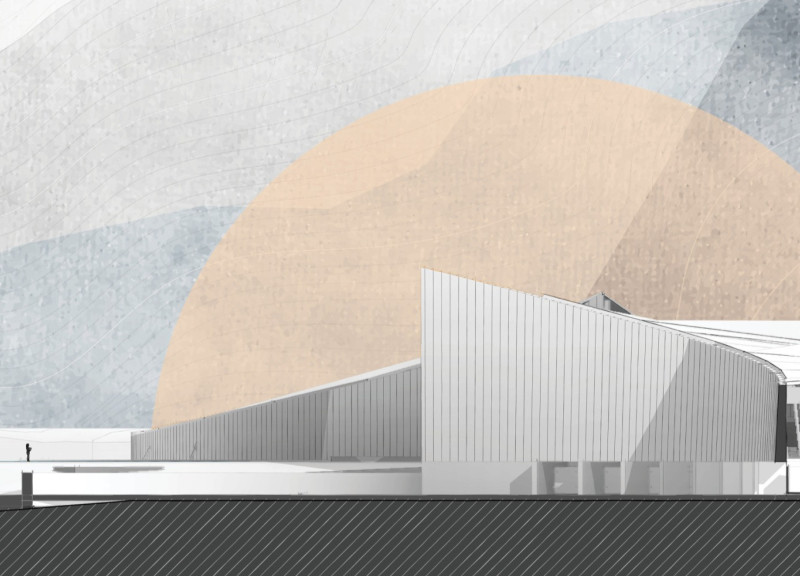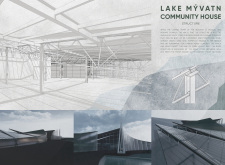5 key facts about this project
The Lake Mývatn Community House in Iceland represents a well-considered architectural project focused on sustainability and community connection. The design seeks to enhance the local environment and offer a multifunctional space that caters to both residents and visitors. Positioned near Lake Mývatn, the structure utilizes natural topography to create a building that blends seamlessly with its surroundings.
The functional layout of the community house is integral to its design. It incorporates spaces for public gatherings, educational programs, and sustainable projects. Primary areas include a reception hall, meeting rooms, a greenhouse for local agriculture education, and facilities dedicated to recycling and waste management. These essential components serve to promote a communal atmosphere while addressing ecological concerns.
One unique aspect of this architectural project is the integration of both rectilinear and curvilinear forms. The geometric designs echo the volcanic landscape and the fluidity of water in the region. This visual language creates a dialogue between the built environment and the natural world, enhancing the site's overall character while ensuring users feel connected to their surroundings.
Material selection is another distinguishing feature. The project employs local and sustainable materials such as aluminum, glass, steel, and specialized insulation to achieve energy efficiency and durability. The use of perforated aluminum and glazed curtain walls further allows for natural light and ventilation, reducing energy consumption. Strategic placement of solar panels enhances the building's sustainability profile, contributing to renewable energy production.
This project emphasizes a commitment to a circular economy through its design. Incorporating rainwater harvesting systems and dedicated recycling areas allows the community house to reduce its environmental footprint, while also fostering community engagement with sustainable practices. The design not only meets functional needs but also encourages environmentally conscious behavior among its users.
Architectural plans and sections of the Lake Mývatn Community House provide further insight into the design's functionality and sustainability strategies. Those interested in exploring architectural ideas and innovations in community-focused design will find the presentation materials insightful, illustrating how architecture can effectively respond to both local context and global sustainability challenges. Explore the project presentation for more details on how these architectural designs contribute to an improved community and environment.






















































